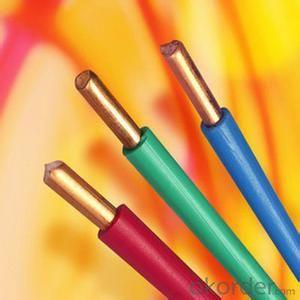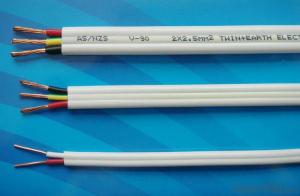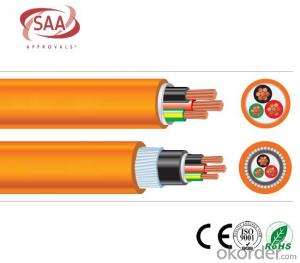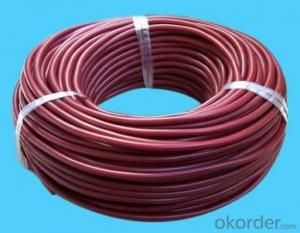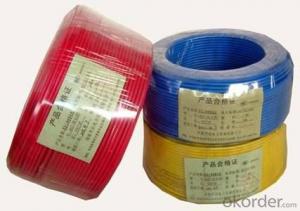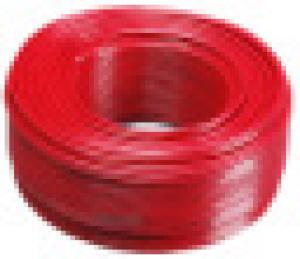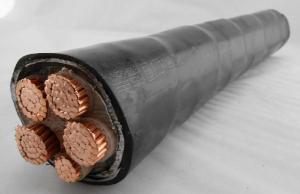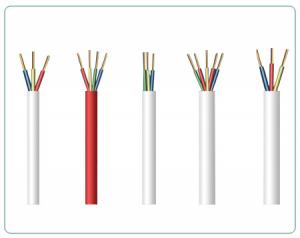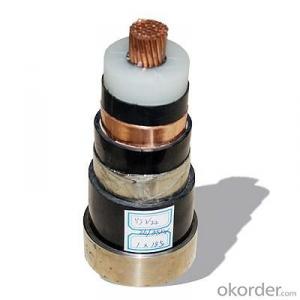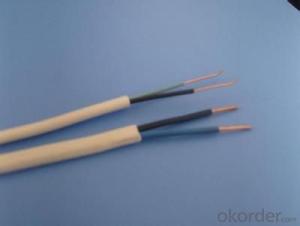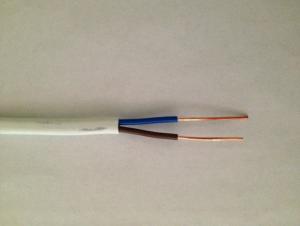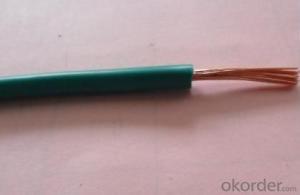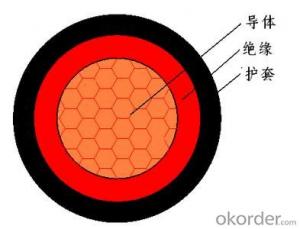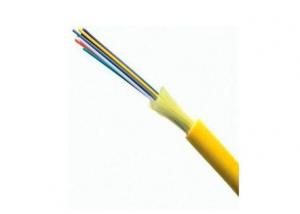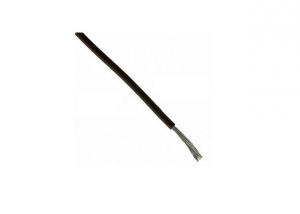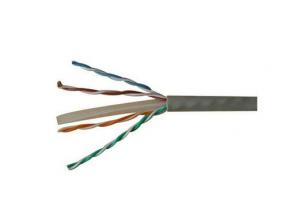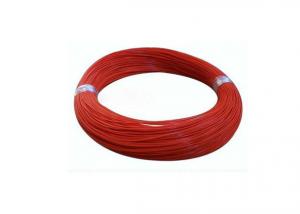Insulated Solid PVC Copper Wire Used for Construction
- Loading Port:
- China Main Port
- Payment Terms:
- TT or LC
- Min Order Qty:
- -
- Supply Capability:
- -
OKorder Service Pledge
OKorder Financial Service
You Might Also Like
Insulated Solid PVC Copper Wire Used for Construction
Quick Details
Place of Origin: Henan, China (Mainland)
- Type: InsulatedModel Number: BV,BVVB
Application: Indoors
Conductor Material: Copper
Conductor Type: Solid
Insulation Material: PVC
Packaging & Delivery
Packing in roll or as your requirements |
4 weeks or as your request |
Specifications
copper wire
1.450/750V solid copper
2.PVC insulated
3.ISO CCC IEC standard
4.factory direct sales
High quality PVC insulated solid copper wire
1.Application:
This copper wire is suitable for fixed laying in power plant with AC rated voltage up to and including 450/750V.
2.Specification:
1). The rated voltage of the wires should equal to or higher then the rated voltage of the system when wires are used at AC system. If the wires are used at DC system, the rated voltage of system should lower then 1.5 times as high as rated voltage of cable and wires. The working voltage of the system could be 1.1 times as high as the rated voltage of the cable.
2). The long term working temperature should lower then 70oC. The working temperature of BV-90 should lower then 90oC. And the laying temperature should higher then 0oC.
3). The curve diameter of the wire should longer than 8 times of the diameter of the outer diameter of cable and wires if their outer diameter is 25 mm or above. If the diameter of cable and wires is above 25 mm, the curve diameter should be at least 12 times of the outer diameter of the cable and wires.
3. Structure size and technical data:
Type | Name | Laying place and requirement | Long term working temperature 0C |
60227IEC01 BV | Copper conductor PVC insulated wires | Fixed laid indoors Conduit etc. | 70 |
60227IEC07 (BV-90) | Heat resistant copper conductor PVC insulated wire at 90 0C | Mainly be laid at the places of high temperature environment and can be laid indoors ,conduits. | 90 |
60227IEC10 (BVV) BVV | Copper conductor PVC insulated PVC sheathed round wires | Fixed laid, fit for the places with high mechanical protection and moisture place, can be laid in the air or underground. | 70 |
BVVB | Copper conductor PVC insulated PVC sheathed flat wires | ||
60227IEC02 (RV) 60227IEC06 (RV) | Copper conductor PVC insulated flexible connector wire | Mainly used at middle and light style moving electronics, home appliances, power and lighting and the places where flexible required |
70 |
60227IEC42 (RVB) | Copper conductor PVC insulated flat flexible connector wire | ||
RVS | Copper conductor PVC insulated flexible twisting connector wire | ||
60227IEC52 (RVV) 60227IEC53 | Copper conductor PVC insulated PVC sheathed round flexible connector wire | ||
60227IEC08 (RV-90) | Cu conductor heat resistant PVC insulated flexible connector wire at 90 0C | Mainly used at the places where heat resistance is required | 90 |
Picture
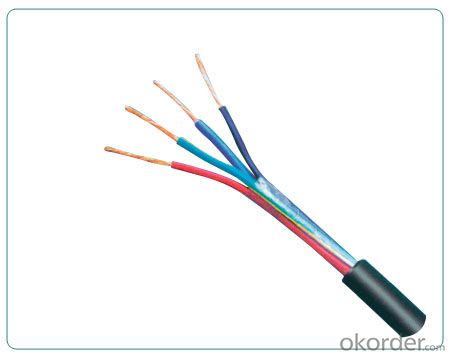
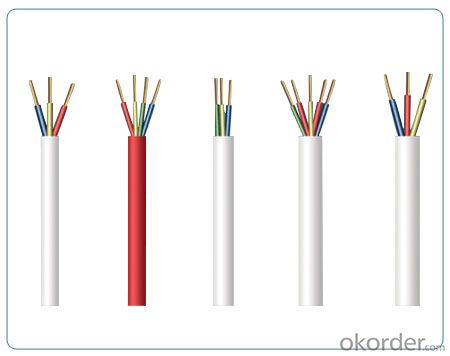
- Q: What is the difference between observing field wires, winter and summer? why? What should you watch if you set up a wire in the summer?
- You look at the background is not running the program did not exit the task manager to see that the CPU usage of the program to end it
- Q: how many wires are allowed in a standard outlet box (i believe 3x2 1/2 deep). what do you do if you need more wires than are allowed?how many wires are allowed if i gang 2 boxes?i live in ontario, canada. thanks
- idk maybe 2?
- Q: How does the three wires of the air conditioning plug connect to the plug?
- Select the power or ground double-click the line, the Track dialog box, the Width option to 30mil, then click Global, select the same in the net, all the power lines or power lines are bold!
- Q: I understand that buisnesses like vonage, and Comcast do not repair telephone wiring(the actual physical wiring outside) is this correct?There was an accident on our property severing the phones lines. The reason I ask, is because the electrician said, if THEY say I have to fix it. Who is they?
- Comcast is not going to have outside wiring usually, it's all internal. They provide you with a box that goes on the cable and you plug your phone into it. If the box is centrally located in your house, you are responsible for the wiring. An electrican can do the wiring but it's cheaper if you do it yourself or get somebody(a friend) that knows about house wiring.
- Q: How to prevent the wire from catching fire
- Do not put the wire wrapped around it will increase the resistance will heat up the fire
- Q: I have a chandelier that has been rewired, and one that has not been rewired. Both have DC electrical wires have ridges down one side and not the other. Now I would think that whether or not a chandelier is originally wired or rewired, if the type of electrical wire that is used is the same, the answer would be the same; a half ribbed wire is a half ribbed wire, right? I asked a question previously about which side of a half-ribbed wire was positive and which side was negative, and one of the answers I got was, The ribbed side is supposed to be the hot or neutral side. I do not trust other peoples wiring so I always test it with a meter.Ok, so now I am wondering about this phrase other people's wiring and how a person can possibly change the positive to a negative inside a premanufactured wire. Can someone explain this to me please?
- Both of these answers are correct, whoever gave a thumbs down is jerking you wire.
- Q: i have tail lights and a right hand turn signal,there is juice getting through the wires. but i have no brake lights. it is a 83 olds. where do i look, or how do i solve this?
- bad connection,s or earth point,s at lamps
- Q: Please guess a riddle: a beautiful ride on the wire. (Hit a plant) Rural visible
- Frequency converter cable for the variable frequency cable, he is generally 3 +3 core, outside the copper wire braided + copper double shield, it requires the cable has a low transmission impedance, low working capacitance, it has a lot of high magnetic waves, Cable insulation impact is relatively large, relatively high demand for interference interference factors. Frequency conversion cable long distance transmission, the general should be coupled with the reactor. Ordinary cable, the outside can be added according to the need to shield or not, although he can produce electromagnetic waves, but will not produce high harmonics, the insulation requirements of the cable is not high frequency cable, he can be four core, five core. There is no need for a symmetrical structure of the cable.
- Q: if you apartment has been condemned because of faulty electrical wiring what course of action can you take? does the landlord have to reimburse you of rent that was recently paid?
- The landlord must reimburse you for any day(s) during which you were denied occupancy. If you have been informed that you must vacate the premises, you should be reimbursed for any such prepaid rents. If you continue to occupy the premises, you are due NOTHING.
- Q: i know both of them are great conductors for electricity, but why is copper better and/or safer?
- The crystalline structure of copper is more suited to distribute electrons between cells. This means lower resistance to the current flow which means less lost energy in the power lines. Flip side: Aluminum is better than copper because it is much cheaper and lighter weight. Aluminum is usually used in high voltage lines. From source 1: CHARACTERISTICS COPPER ALUMINUM Tensile strength (lb/in2).55,000 25,000 Tensile strength for same conductivity (lb). 55,000 40,000 Weight for same conductivity (lb). 100 48 Cross section for same conductivity (C.M.). 100 160 Specific resistance (W/mil ft). 10.6 17 Also, wires usually contain a lot of smaller strands due to skin effect (see the wiki page).
Send your message to us
Insulated Solid PVC Copper Wire Used for Construction
- Loading Port:
- China Main Port
- Payment Terms:
- TT or LC
- Min Order Qty:
- -
- Supply Capability:
- -
OKorder Service Pledge
OKorder Financial Service
Similar products
Hot products
Hot Searches
